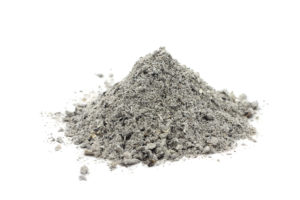
Top Five Tips for Getting Your Ash Out
Ash Removal Can Be Tricky and Even Dangerous. Follow These Five Ways to Do It Right, and Do It Safe
Fire Cleanup Tips
Once the evacuation orders are lifted and it is safe to go home, folks who are fortunate enough to have little or no fire damage will still have some post-fire cleanup to tackle. Ash will have settled on just about everything, smoke still lingers indoors and out, and there may be debris or water damage with which to contend.
In the case of significant water, smoke or fire damage, it is best to bring in professionals to avoid issues with mold, asbestos, structural integrity or air quality in your home. If you plan on submitting a claim, be sure to contact your insurance company before hiring a home restoration company. Your agent will be able to advise you on how to document damage, move forward with repairs, and submit expenditures.
Hiring a professional cleaning crew may also be the best choice for folks dealing solely with ash and smoke odor removal, particularly if you are managing cardiovascular or respiratory issues, including asthma.
For those who choose to perform their own ash and smoke removal, here are some tips to keep in mind.
Ash on your roof, driveway, patios or walkways should be gently swept into a pile, placed in a bag and deposited in your outdoor waste bin. It might be tempting to bring out your leaf blower to make quick work of the ash that has fallen on your property, but this must be avoided, since it will disperse the ash back into the air and diminish air quality further.
Folks may also be tempted to rinse down their driveways and patios with a garden hose. If you have an area of ground where you can direct the water, this may be okay. However, please avoid rinsing the ash into storm drains. Ash of any type should not be introduced to storm drains, but it can be particularly harmful if ash from structure fires enters the storm water system.
Unless you have a HEPA-filter vacuum or a shop vacuum with a particulate filter, it is best to avoid vacuuming ash inside your home or on your property. According to the California Association of Health Facilities, “Shop vacuums and other common vacuum cleaners do not filter out small particles, but rather blow such particles out the exhaust in the air where they can be breathed.”
Instead, you can gently sweep floors and dust surfaces to gather the ash to be disposed of in bags in your trash bin. Follow this by wet mopping floors or using a damp cloth to wipe surfaces to pick up particles you may have missed.
Keep in mind that ash can be irritating to your skin, so it is best to wear long pants and long sleeves during fire cleanup. Of course, you should also wear a NIOSH-approved N95 or P100 mask or respirator.
If you have soot on your walls, first try cleaning them with a mild soap or cleanser. If this is not effective, the Red Cross recommends using a mixture of one gallon of warm water, one cup of bleach, and four to six tablespoons of trisodium phosphate (TSP), and then rinsing the walls with plain water.
Not all residents will have to deal with ash or soot, but even if you live miles away from the fire, you will likely have to deal with the smell of smoke. Air purifiers with HEPA filters can help, and laundering clothes and linens may remove the odor in mild cases. Adding one cup of baking soda and one cup of vinegar to each load may help. Fabrics that can be safely soaked can be placed in a solution of one cup of baking soda per one gallon of water overnight before laundering them according to the instructions on the label. For larger items, like drapes or comforters, dry cleaning is usually the best option.
For items that cannot be laundered, such as sofas or area rugs, you may have some success by sprinkling baking soda over the fabric and vacuuming it the next day. Odor-removing sprays are another option — just make sure you purchase products designed to remove odors, not mask them. If these options do not work, you can have rugs and furniture professionally cleaned to remove the smoke smell.
Of course, it is often easiest, quickest and most effective to hire odor-removal specialists who offer professional services, such as ozone treatments, to completely remove the smell of smoke from your home, cars, furnishings, clothing and other belongings.
According to the Federal Emergency Management Agency (FEMA), it is also recommended that you have all HVAC units and ductwork professionally cleaned, that you change your HVAC filters immediately, and that you continue to replace the filters monthly for the first year after a fire near your home.

Thanks OjaiHub!